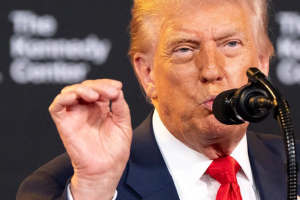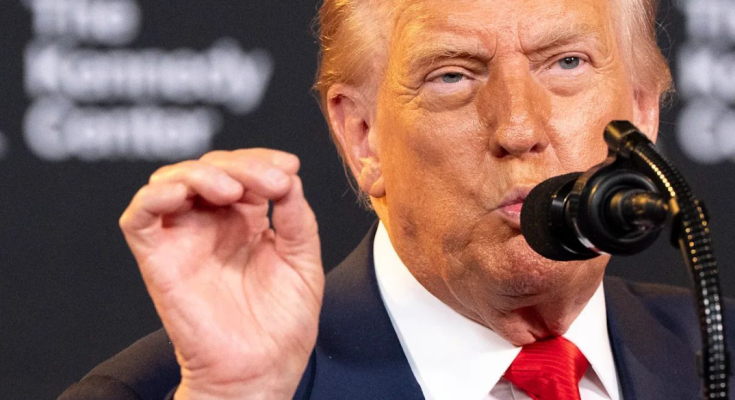Trump Administration Reviewing All 55 Million Visa Holders for Violations
Immigration has always been one of the most contentious issues in American politics. During his presidency, Donald Trump consistently made headlines with bold actions aimed at tightening border security and reshaping immigration policy. One of the most sweeping moves that drew global attention was the announcement that his administration would review all 55 million foreigners currently holding U.S. visas for potential violations.
The sheer scale of this initiative stunned both supporters and critics. Never before in U.S. history had there been such a comprehensive review of the nation’s vast foreign visitor and immigrant population. While the Trump administration framed it as a necessary step to protect national security and ensure compliance with American laws, opponents argued it was an act of overreach that risked sowing fear among millions of law-abiding residents.
A Sweeping Review on an Unprecedented Scale
Visas are the gateway to the United States for millions of people—students, tourists, skilled workers, family members, and investors. At the time, more than 55 million foreign nationals legally resided in or regularly traveled to the U.S. under various visa categories.
The Trump administration’s review was intended to:
-
Check compliance with visa terms — ensuring people were not overstaying their legal period of stay.
-
Identify national security threats — particularly after concerns about terrorism, cyber threats, and espionage.
-
Catch fraudulent applications — weeding out individuals who obtained visas under false pretenses.
-
Support immigration enforcement — allowing federal authorities to quickly revoke visas or initiate removal proceedings if violations were found.
What made the announcement extraordinary was the blanket scope. Typically, U.S. immigration authorities conduct checks based on red flags or specific intelligence. But under this directive, every single visa holder—from a college freshman on a student visa to a tourist visiting Disneyland—could potentially come under review.
The National Security Justification
The Trump White House consistently argued that “strong borders” were essential to keeping Americans safe. In official statements, administration officials claimed that terrorists and criminal networks could exploit the visa system to gain entry. The memory of the 9/11 attacks—where some perpetrators entered the country legally on visas—was often cited as a cautionary reminder.
By reviewing all visas, the administration believed it could identify individuals who might have slipped through background checks or who had violated the terms of their stay in ways that posed risks.
Supporters saw this as a proactive, common-sense approach. “If you have nothing to hide, you have nothing to fear,” some lawmakers declared, echoing the administration’s stance that law-abiding foreigners would not be affected.
Critics Sound the Alarm
Immigrant rights advocates, however, viewed the initiative very differently. Civil liberties groups raised concerns about mass surveillance, profiling, and discrimination. They worried that even minor mistakes—like a missed check-in for international students or an error in paperwork—could trigger harsh penalties, including visa revocation or deportation.
Universities, in particular, expressed alarm. At the time, nearly 1.1 million international students were studying in the United States, contributing billions to the economy. The possibility of being swept into a nationwide visa audit created anxiety that could discourage talented students from choosing America as their place of study.
Business leaders also warned that such measures risked damaging America’s reputation as a welcoming hub for skilled workers and entrepreneurs. Silicon Valley, heavily reliant on foreign talent through programs like the H-1B visa, feared losing valuable employees to countries with less restrictive policies.
Human Impact: Fear Among Families and Workers
For the individuals affected, the announcement carried deeply personal consequences. Families on spousal visas wondered if minor errors in their paperwork might jeopardize their status. Tourists questioned whether a past overstay of even a few days could permanently block them from returning. Workers on temporary visas feared that stricter reviews might cut short careers they had built in the U.S.
Stories emerged of families deciding to cancel trips, students delaying enrollment, and skilled workers reconsidering job offers. While many were confident they had complied fully with visa requirements, the uncertainty created stress and fear.
Political Ramifications
Politically, the visa review became another flashpoint in America’s divided immigration debate.
-
Supporters of Trump’s policies argued that immigration enforcement had been too lax for decades, and that millions of overstays undermined the integrity of the system. They framed the review as a necessary reset—an attempt to restore respect for the law.
-
Opponents, meanwhile, accused the administration of using fear as a political tool. They argued that broad sweeps risked alienating allies, undermining America’s soft power, and driving away people who contributed positively to the country’s cultural and economic life.
The issue also played into broader debates over Trump’s legacy: Was he protecting American sovereignty, or was he dismantling the nation’s identity as a land of opportunity?
Logistical Challenges
Beyond politics, the sheer logistics of reviewing 55 million visa records were staggering. Immigration systems in the U.S. were already overwhelmed with backlogs, delays, and outdated technology. Critics questioned how agencies could realistically process such a massive review without creating chaos.
Some analysts suggested the move was more symbolic than practical—intended to send a message of toughness on immigration rather than actually comb through every file. Still, the announcement alone was enough to affect public perception and behavior among immigrants.
International Reactions
The global reaction was swift. Governments whose citizens were heavily represented among U.S. visa holders—India, China, Mexico, and European nations—expressed concerns. Diplomats warned that mass visa scrutiny could harm international relations, complicate tourism, and discourage business travel.
Some countries hinted at reciprocal measures, suggesting that if the U.S. treated their citizens with suspicion, they might consider imposing stricter requirements on American travelers.
Support vs. Opposition: A Divided America
Ultimately, the visa review debate encapsulated the broader divide in American politics.
-
For supporters of Trump, the initiative represented long-overdue accountability in a system that had grown too lenient. They believed the government had every right to scrutinize foreigners within its borders, especially in the name of national security.
-
For critics, it symbolized the dangers of overreach and the erosion of America’s long-standing openness to the world. They argued that treating millions of law-abiding visa holders as potential violators undermined trust, fueled xenophobia, and threatened America’s global leadership.
Legacy and Lasting Impact
Whether or not the review was fully implemented as envisioned, its announcement had lasting effects. It reshaped how millions of foreigners thought about their relationship with the U.S. For some, it reinforced the sense that America was becoming more closed-off and suspicious. For others, it validated their belief that stricter enforcement was necessary to restore fairness.
Even years later, the memory of this sweeping visa review continues to resurface in debates about immigration policy. It serves as a reminder that immigration is not just about laws and documents—it is about people, trust, opportunity, and the balance between security and openness.
Conclusion
The Trump administration’s plan to review all 55 million foreigners with U.S. visas was one of the boldest and most controversial immigration actions in recent memory. It represented a collision of two visions: one that prioritized national security and strict enforcement, and another that emphasized openness, opportunity, and trust.
For millions of people who live, study, work, or dream in the United States, the initiative was more than a policy—it was a test of America’s identity. Was the country a fortress to be guarded at all costs, or a land of opportunity to be shared with the world?
The answer, then as now, remains at the heart of the American immigration debate.


